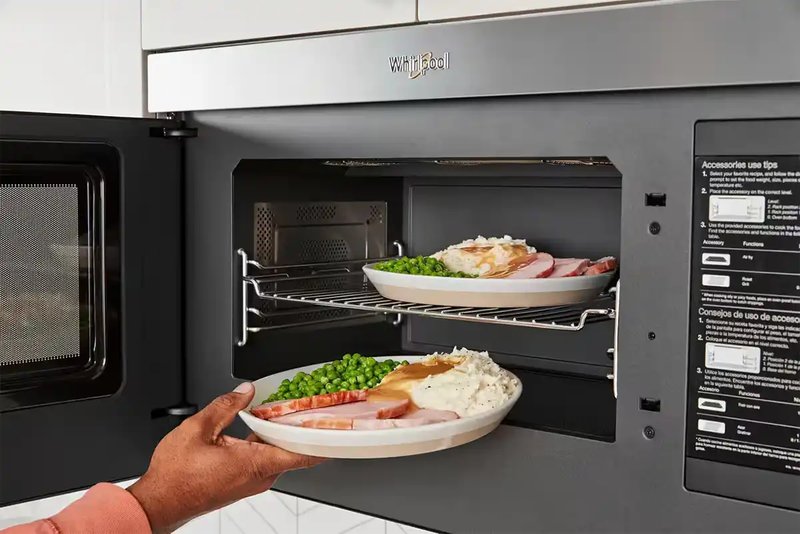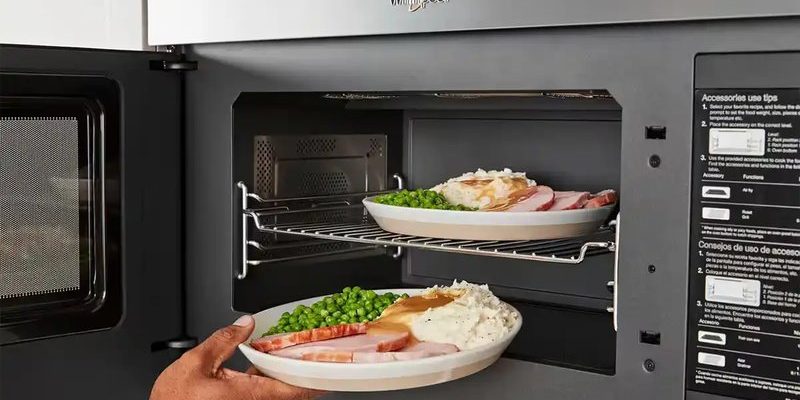
The “Oe” error code can feel like one of those cryptic messages from outer space, but it’s actually a signal from your microwave telling you that there’s a problem with the ventilation system. Imagine your microwave as a mini chef that needs to breathe. If its vents are blocked or malfunctioning, it can’t do its job properly. This code is its way of saying, “Hey, I need some fresh air over here!” It’s crucial to address and prevent this issue, not just to avoid future headaches, but to extend the lifespan of your microwave.
Understanding The Causes of the Oe Error Code
Before diving into how to prevent the Oe error code in the future, it’s helpful to know why it occurs in the first place. Typically, this error indicates a ventilation issue. When your microwave’s airflow is hindered, it can’t cool itself efficiently. Think of it like a car engine overheating because the radiator is blocked. Without proper airflow, your microwave struggles to regulate its internal temperature, prompting the Oe error code.
Several factors might lead to ventilation problems. Commonly, it could be due to an accumulation of grease and debris inside the vents over time. This build-up restricts airflow, much like how a blocked nose makes breathing hard. Another possibility is a faulty fan motor. If the motor that powers the fan isn’t working properly or is outright broken, it can’t circulate air, leading to overheating and that pesky error code.
Lastly, check if there’s an obstruction around the microwave’s exterior vents. Items placed too close to the vents can block airflow. Imagine trying to breathe with a pillow over your face; not pleasant, right? Ensuring the area around your microwave is clear can prevent such blockages. By understanding these causes, you’re already on the path to preventing the error code from disrupting your cooking adventures.
Regular Maintenance: Your Microwave’s Best Friend
Now that we know what triggers the Oe error code, let’s talk about how to prevent it. Regular maintenance is key. Just as you would take your car for a tune-up or your pet for a vet check-up, your microwave also needs a bit of TLC (Tender Loving Care). This doesn’t mean you need to be a tech wizard, but a few simple steps can make a huge difference.
First, make it a habit to clean the microwave and its vents regularly. You can wipe down the interior with a mild cleaner and a damp cloth. For the vents, a gentle vacuum can help suck out any trapped dust or grease. This is akin to cleaning the lint trap in a dryer; a small act that pays off big time by improving efficiency and safety.
Secondly, periodically inspect the fan motor. Listen for unusual noises that might indicate the motor is straining or failing. You don’t have to be a technician; just trust your ears. If something sounds off, it might be time to call in a professional to check. Ignoring strange noises can lead to bigger problems down the road.
Lastly, always ensure that there’s enough space around your microwave. It needs to breathe in fresh air, so keep the area ventilated and free from clutter. By incorporating these maintenance steps into your routine, you’ll not only prevent the Oe error code but also prolong your microwave’s life considerably.
Considerations for Future Prevention
Preventing the Oe error code goes beyond maintenance; sometimes, it involves making smarter choices when using your microwave. For instance, consider the types of containers you use. Certain plastics can vent off vapors that contribute to blocked vents. Switching to microwave-safe glass or ceramics can help minimize such issues.
Another precaution is to monitor the duration and frequency of your microwave use. Extended use can lead to overheating, especially if the ventilation is suboptimal. If you find yourself constantly reheating food or running long cooking cycles, take short breaks in between to allow the microwave to cool down. Think of it as giving your microwave a little breather between tasks.
Lastly, if your microwave is an older model, consider upgrading to a newer version with improved ventilation systems. Newer models often come with enhanced designs that boost airflow, reducing the chances of encountering the Oe error code. While this might seem like a hefty investment, it’s a small price to pay for peace of mind and efficiency in the long run.
Taking Action When You Encounter the Oe Error Code
Despite your best efforts, you might still encounter the Oe error code. Don’t panic—think of it as your microwave’s way of asking for a quick tune-up. Begin by performing basic checks. Make sure the vents are clear and free from blockages. If they are, clean them gently and see if the error persists.
If the code doesn’t clear, inspect the fan motor and listen for abnormal sounds. If you suspect the motor is faulty, it might be time to call in a professional. Attempting to fix complex issues without the right knowledge can do more harm than good. Sometimes, a professional’s touch is what’s needed to set things right.
Also, review your usage habits. Frequent or prolonged microwave cycles might be putting unnecessary strain on your appliance. Adjusting how you use the microwave can alleviate the issue. Remember, prevention is always better than cure. By taking these steps, you can keep the Oe error code at bay and ensure that your trusty microwave remains a reliable kitchen companion for years to come.
In conclusion, preventing the Whirlpool microwave’s Oe error code involves a mix of regular maintenance, smart usage, and timely professional support. By taking these steps, you’ll not only tackle this issue but also enhance your overall microwave experience. Here’s to many more hassle-free delicious meals!
